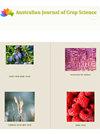Nitrate contamination of different organic and non-organic vegetable varieties: A case study in Morocco
Q3 Agricultural and Biological Sciences
引用次数: 0
Abstract
Nitrates are chemical substances naturally present in the environment (plants, soil, water) and are involved in the natural nitrogen cycle. They represent the most stable oxidation state and are essential nutrients for plant growth. The exposure and ingestion of nitrates by the population are mainly through the consumption of vegetables and occasionally through water intake. The objective of this study is to determine the nitrate content of various varieties of vegetables from industrial agriculture consumed by the population in three cities in northern Morocco's Rabat-Salé-Kenitra region, as well as to demonstrate the health risk of consuming a high concentration of nitrate. The results determine the nitrate content of 77 vegetable samples harvested in Morocco’s Rabat-Salé-Kenitra region. The results showed that nitrate concentrations in vegetables varied depending on different areas in the city and whether the sample was organic or non-organic. The results of our study vary from 31.4 mg/kg (red onion) to 7860 mg/kg (beetroot) in the different vegetable varieties studied. It is recommended that this level be monitored on a regular basis and that the population be made aware of the recommended daily consumption of nitrates (0.84 mg-N/kg/d or 3.7 mg NO3-/kg/d) in the region to prevent excessive exposure to these potentially toxic compounds. In addition, it is advised to promote sustainable agriculture techniques aimed at lowering overall nitrate levels in the food supply and boosting the health and sustainability of the area's food system不同有机和非有机蔬菜品种的硝酸盐污染:摩洛哥的案例研究
硝酸盐是自然存在于环境(植物、土壤、水)中的化学物质,参与了自然的氮循环。它们代表了最稳定的氧化状态,是植物生长所必需的营养物质。人们接触和摄入硝酸盐主要是通过食用蔬菜,偶尔也通过饮水。本研究的目的是确定摩洛哥北部拉巴特-萨尔萨姆-凯尼特拉地区三个城市人口消费的各种工业化农业蔬菜的硝酸盐含量,并证明食用高浓度硝酸盐的健康风险。结果确定了摩洛哥拉巴特-萨尔萨姆-肯尼特拉地区收获的77种蔬菜样本的硝酸盐含量。结果表明,蔬菜中的硝酸盐浓度因城市不同地区以及样品是有机还是非有机而异。我们研究的结果在不同蔬菜品种中从31.4毫克/公斤(红洋葱)到7860毫克/公斤(甜菜根)不等。建议定期监测这一水平,并使该地区的人口了解建议的每日硝酸盐摄入量(0.84 mg- n /kg/d或3.7 mg NO3-/kg/d),以防止过度接触这些潜在的有毒化合物。此外,建议推广可持续农业技术,旨在降低食品供应中的总体硝酸盐水平,促进该地区粮食系统的健康和可持续性
本文章由计算机程序翻译,如有差异,请以英文原文为准。
求助全文
约1分钟内获得全文
求助全文
来源期刊

Australian Journal of Crop Science
农林科学-农艺学
CiteScore
1.20
自引率
0.00%
发文量
75
审稿时长
3.5 months
期刊介绍:
Information not localized
 求助内容:
求助内容: 应助结果提醒方式:
应助结果提醒方式:


